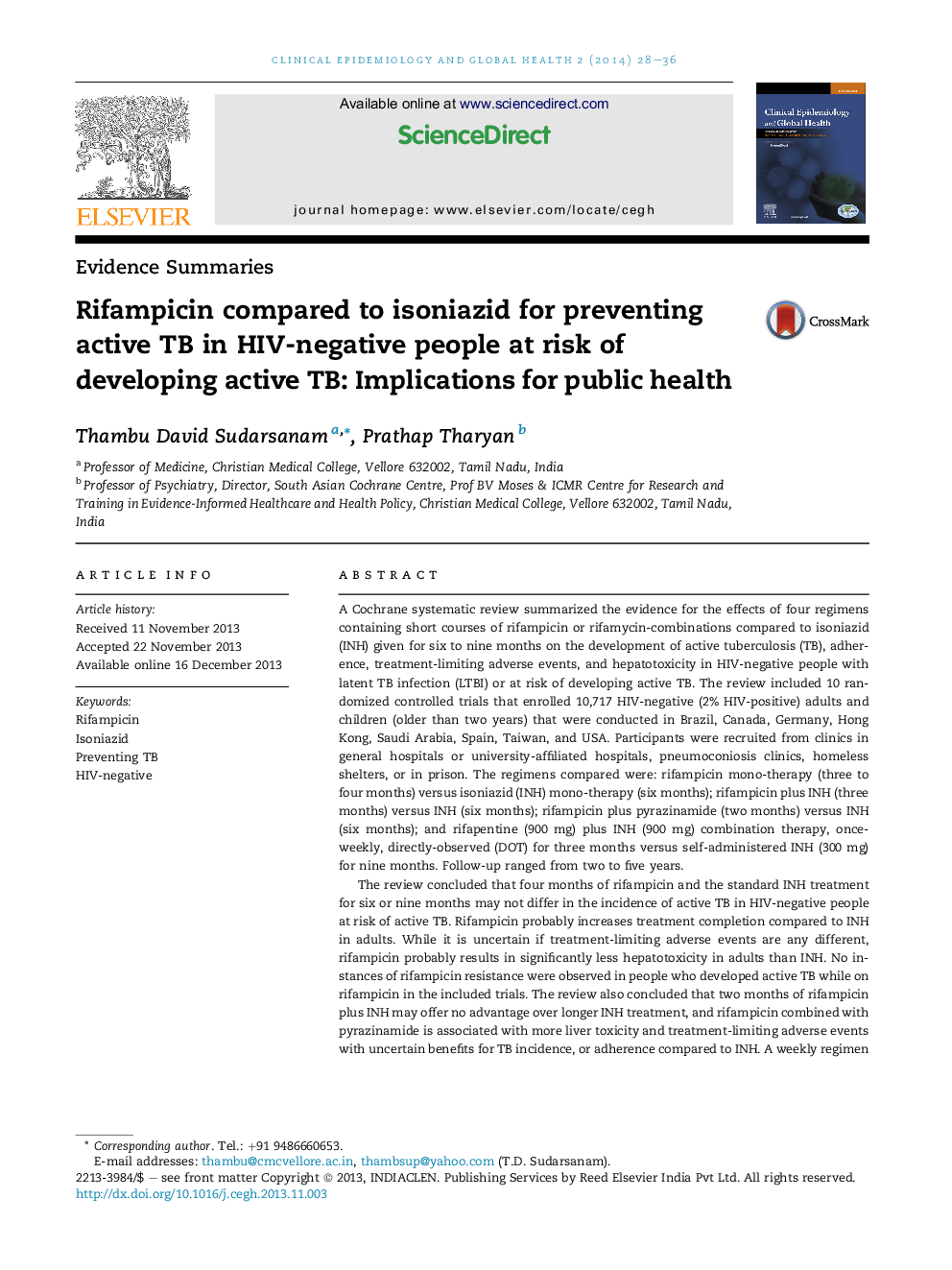| Article ID | Journal | Published Year | Pages | File Type |
|---|---|---|---|---|
| 3396366 | Clinical Epidemiology and Global Health | 2014 | 9 Pages |
A Cochrane systematic review summarized the evidence for the effects of four regimens containing short courses of rifampicin or rifamycin-combinations compared to isoniazid (INH) given for six to nine months on the development of active tuberculosis (TB), adherence, treatment-limiting adverse events, and hepatotoxicity in HIV-negative people with latent TB infection (LTBI) or at risk of developing active TB. The review included 10 randomized controlled trials that enrolled 10,717 HIV-negative (2% HIV-positive) adults and children (older than two years) that were conducted in Brazil, Canada, Germany, Hong Kong, Saudi Arabia, Spain, Taiwan, and USA. Participants were recruited from clinics in general hospitals or university-affiliated hospitals, pneumoconiosis clinics, homeless shelters, or in prison. The regimens compared were: rifampicin mono-therapy (three to four months) versus isoniazid (INH) mono-therapy (six months); rifampicin plus INH (three months) versus INH (six months); rifampicin plus pyrazinamide (two months) versus INH (six months); and rifapentine (900 mg) plus INH (900 mg) combination therapy, once-weekly, directly-observed (DOT) for three months versus self-administered INH (300 mg) for nine months. Follow-up ranged from two to five years.The review concluded that four months of rifampicin and the standard INH treatment for six or nine months may not differ in the incidence of active TB in HIV-negative people at risk of active TB. Rifampicin probably increases treatment completion compared to INH in adults. While it is uncertain if treatment-limiting adverse events are any different, rifampicin probably results in significantly less hepatotoxicity in adults than INH. No instances of rifampicin resistance were observed in people who developed active TB while on rifampicin in the included trials. The review also concluded that two months of rifampicin plus INH may offer no advantage over longer INH treatment, and rifampicin combined with pyrazinamide is associated with more liver toxicity and treatment-limiting adverse events with uncertain benefits for TB incidence, or adherence compared to INH. A weekly regimen of supervised rifapentine plus INH for three months has higher completion rates, is probably as effective and a safer option than nine months of self-administered INH, though more data on its effects in adults in high TB burden countries, and in children are needed.
